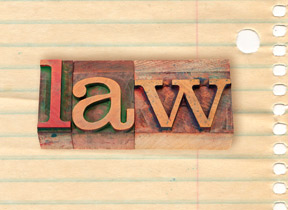Since sexual harassment can be in the eye of the beholder, only evidence that meets civil standards of proof, argues a university complaints investigator, can fairly decide what happened.

Why is there a great concern about false allegations of sexual harassment (or other forms of harassment) when few formal complaint investigations result in findings of false allegations? Simply put, the stakes are high. There may be negative impacts on career and reputation. Potential job loss or discipline is a reality. The stress, time, effort, frustration, and financial cost take a toll on the parties. Establishing the basis for a complaint, or defending against allegations, particularly if this entails proving a negative—that something did not happen when it is alleged it did—is often a difficult and lengthy process. The embarrassment and emotions attached to allegations and evidence can undermine even the strongest individual.
As an investigator of hundreds of complaints I have seen much confusion and many misconceptions about false allegations. Using illustrations from university settings and popular culture, this article explains and clarifies what is and is not a false allegation, contrasts false allegations with allegations that are not proven (not substantiated) following an investigation, and discusses some important considerations when dealing with allegations of sexual harassment.
Don’t think of allegations as being “true” or “false”
It is simplistic and unhelpful to frame allegations as “true” or “false”. Doing so leads to confusion and misunderstandings. Here’s why. An allegation is a statement of belief that some wrong or harm has occurred. For example, a student alleges that a professor has sexually harassed her; she believes the professor has crossed the line into behaviour that is illegal, contravenes the university’s policies, is unacceptable, and harms her (her learning, her grade in the course, her completion of the course, academic references, her comfort level with the faculty member, her academic or personal reputation, etc.).
Allegations of sexual harassment (or, indeed, of other types of harassment, such as racial harassment, bullying, homophobia, or psychological harassment) will—following a fact-finding investigation—either have merit or not. Merit is determined through a proper investigation: a fact-finding process aimed at clarifying and assessing the issues raised by the allegations. Complaints investigators do this by gathering evidence relevant to the allegations and assessing this evidence against established standards of what constitutes sexual harassment. These standards have evolved over the years through decisions of courts, human rights administrative tribunals, and arbitrators, and are informed by research and policy development. Credibility of the parties is also assessed.
If the allegation has merit it will be substantiated by the evidence. If it does not, it will not be substantiated. In a few instances, a determination of “unable to substantiate” may apply, if the investigation has not been able to find evidence persuasive either way, often the result of a lack of any evidence (direct or similar fact) which might shed light on the matter.

What is a “false allegation”?
In sexual harassment investigations, a false allegation is one the complainant brings knowing that what is alleged did not occur and, therefore, could not constitute sexual harassment. Malice may or may not exist. Generally, we consider fabrications to be false allegations.
However, be careful not to define lying as a false allegation. While popular discourse may equate false allegations with lies, not all lies are false allegations. For example, a complainant may not disclose relevant facts owing to shame, embarrassment, fear, mental illness, or simple mistake. While this may undermine the complainant’s credibility, it does not in itself make the allegation a fabrication. For example, let us say a complainant (an administrative staff member) does not disclose the fact that he engaged in kissing and sexual behaviour with the alleged harasser (a professor) or that such behaviour was consensual in the early days of their intimate relationship. However, this “lie” (lack of full disclosure) does not necessarily mean his allegations of subsequent sexual harassment by the faculty member are false.
The aim of an investigation
A proper investigation ensures that the fact-finding process—including the identification, gathering and assessment of evidence—is fair, objective, and thorough. It answers two questions: Did it (what is alleged) occur? And if it did, what is the significance of it? In other words, is it sexual harassment?
A superficial understanding of harassment is inadequate, and a superficial analysis based merely on the complainant’s prima facie case, or focussing on subjective impressions, is insufficient. The totality of the evidence must be assessed to determine whether specific behaviours constituted sexual harassment—or something else, such as interpersonal conflict, miscommunication, unprofessional behaviour, or potential criminal behaviour, such as sexual assault or criminal harassment (stalking). An evidence-based process is fundamental to a careful, objective, and thorough analysis using the required “balance of probabilities” that is the civil standard of proof.
Not proven (not substantiated) does not mean a false allegation
An investigation may conclude that allegations are unsubstantiated by the evidence for any number of reasons, none of which relate to fabrication or false allegations. For example, Faculty Member A may allege sexual harassment by Faculty Member B. The allegation is not proven. Person A may misunderstand what is defined as sexual harassment; for example, the jokes told or the comments made by B are inappropriate but do not constitute sexual harassment. Person A may not have accurately identified who made the comments; therefore, the allegation made about Person B is not substantiated. Person A may not have accurately or completely identified the comments or the context in which the comments were made. Or, the comments were made, but the evidence shows that the conduct was mutual, and Person B could not reasonably know her or his comments were unwelcome. Or, a single event is complained of—Person B shows Person A a YouTube video of women swimming naked—yet the investigation concludes that this single event is not sufficiently severe (or, perhaps, sexual) to be considered sexual harassment. Keep in mind that any of these examples may indicate that inappropriate or unprofessional conduct occurred, but it does not fit the definition of sexual harassment.
Don’t assume a complainant’s prima facie case is sufficient proof of harassment
Essentially, a prima facie case of sexual harassment exists when a complainant’s allegations, on the face of it, appear to have all the elements of sexual harassment. While the onus is first on the complainant to make out a prima facie case (before the onus shifts to the alleged harasser to respond to the allegations), the prima facie case does not in itself create proof of substantiation.
As noted earlier, whether the complaint has merit will be determined through a fact-finding process. Too often people quickly and inappropriately rush to judgment, declaring harassment exists before the facts are known, the evidence is assessed, and a proper determination is made. The college-based play Oleanna illustrates this. Indeed, David Mamet’s controversial play is sometimes referred to as a he-said-she-said sexual harassment story. It is also considered to be a play about false accusations of sexual harassment.
 Written in the early 1990s and still performed today, Oleanna prompts us to interpret the dialogue, tone and body language of John, a professor in his mid-forties, and Carol, his student. Over three provocative acts, the play may enrage audience members as they empathize with either character, or both, or neither. Or, it may challenge us to unpack an unhealthy brew of sexual harassment (or inappropriate behaviour? or rape?), unclear communication, partisan perceptions, and strong emotions, as well as issues of power, gender, class, and age. We struggle with what appears to be the male (and professorial?) privilege of John and the awakening feminist (and mob?) analysis by Carol.
Written in the early 1990s and still performed today, Oleanna prompts us to interpret the dialogue, tone and body language of John, a professor in his mid-forties, and Carol, his student. Over three provocative acts, the play may enrage audience members as they empathize with either character, or both, or neither. Or, it may challenge us to unpack an unhealthy brew of sexual harassment (or inappropriate behaviour? or rape?), unclear communication, partisan perceptions, and strong emotions, as well as issues of power, gender, class, and age. We struggle with what appears to be the male (and professorial?) privilege of John and the awakening feminist (and mob?) analysis by Carol.
But is it sexual harassment? Are these false allegations? As an investigator I am intrigued and frustrated by the play. It presents prima facie evidence of “something”—possibly of sexual harassment, maybe of assault, probably of abuse of power (by the professor? the student? the tenure committee?), certainly of unclear communication and mixed (misguided? malicious?) motives. As theatre it is enormously effective, as it places us in the role of judge and jury but without the benefit of fact-finding and analysis. We overlay our own subjective impressions on those of the prime characters. As an attempt to discover the truth and deliver fairness, justice, or equity it fails miserably—and that may be why it makes good theatre.
The power—and Achilles heel—of subjective impressions
Over the years, labour arbitrators have cautioned against using subjective impressions to decide the merit of workplace grievances of harassment. They have emphasized that objective standards, not solely the subjective impressions of the alleged victim or alleged harasser, must be applied in determining whether harassment or abuse has occurred. A famous photograph illustrates this; conduct occurred, but does it constitute sexual harassment?
American Girl in Italy by Ruth Orkin is one of the best-known street photographs. Taken in 1951 in Florence, Italy, the photo shows a woman walking along a sidewalk while men look at her. My description is carefully worded. I could have said “young woman” or “girl,” a “gauntlet of gawking men” (as some have said), or “ogled by 15 men,” or “hassled” or “harassed.” I could describe the body language of the woman, the look on her face, or that of the men, especially the man sitting on a motorcycle and another man with pursed lips who has his hand near (on?) his crotch. The latter has been described by some as “grabbing his junk” or “that not-so-innocent-looking gesture with his hand.” Some describe the men as “leering and lascivious,” the woman representing “either stoic independence or sheer vulnerability.”
In interviews this year, on the 60th anniversary exhibition of this iconic photograph and other works by Orkin, Nina Craig, who is the subject of American Girl in Italy, says, “Some people want to use it [the photo] as a symbol of harassment of women, but that’s what we’ve been fighting all these years. It’s not a symbol of harassment. It’s a symbol of a woman having an absolutely wonderful time!” Craig describes the street behaviour of the men (in the photo, in Italy, and elsewhere in Europe) as making her feel “appreciated.” And what of the gesture by the man in the photo? Craig explains her experience and interpretation of his behaviour and of the other men this way: “That young man is not whistling, by the way; he’s making a happy, yelping sound, and where you see him touching the family jewels, or indicating them, with his hand—well, for a long time that was considered an image people should not look at. That part was airbrushed out for years… But none of those men crossed the line at all.” Were the men harassing her? “I can tell you that it wasn’t the intent of any man there to harass me.”
Are “facts” socially constructed?
For her part, Orkin says “Being a photographer is making people look at what I want them to look at.” What do you see when you look at her striking photo? How are we to “factually” interpret the experience of the woman in American Girl in Italy and the behaviour of the men? Craig does not allege harassment. Others who witness the behaviour or who experience similar treatment by men might do so. Which version do we believe? (Note that the Supreme Court of Canada has ruled that if only some women, and not all women, are victims of sexual harassment, it does not mean the conduct is not sex discrimination.)
The law and case law also tell us we need to consider what is known or ought to be known to be unwelcome comment or conduct, and what might constitute sexual harassment. What would a reasonable person, in 1951, conclude? In 2011? In Italy versus Canada? What would a similarly situated reasonable woman conclude?
I recall a young, second-generation Asian student I interviewed many years ago. Another student had brought a complaint against a professor alleging sexist, homophobic, and racist behaviour and the creation of a poisoned environment. This witness recounted several examples of classroom comments that struck me as being potentially racist (as well as sexist, and some as homophobic). I asked if she considered the professor’s behaviour to be racist. “No,” she replied, “it’s inappropriate—he shouldn’t be saying these things. It’s not good.” I probed, wanting to understand her interpretation. She looked at me (an older, white woman) as though to say, “You don’t get it” and then patiently explained, “This is my daily experience. I am a young Korean woman. If I called this racism and sexism, I wouldn’t be able to get through my day. I don’t have time to do this. I have to live my life.” The effect of this professor’s behaviour was one thread in the rich and sometimes painful tapestry of this woman’s life.
What can we learn from such examples? As teachers and colleagues we can minimize the possibility that our behaviour may cause harm or be interpreted as harassment by being mindful of the value of being respectful, reasonable, and empathetic in our interactions with others.










